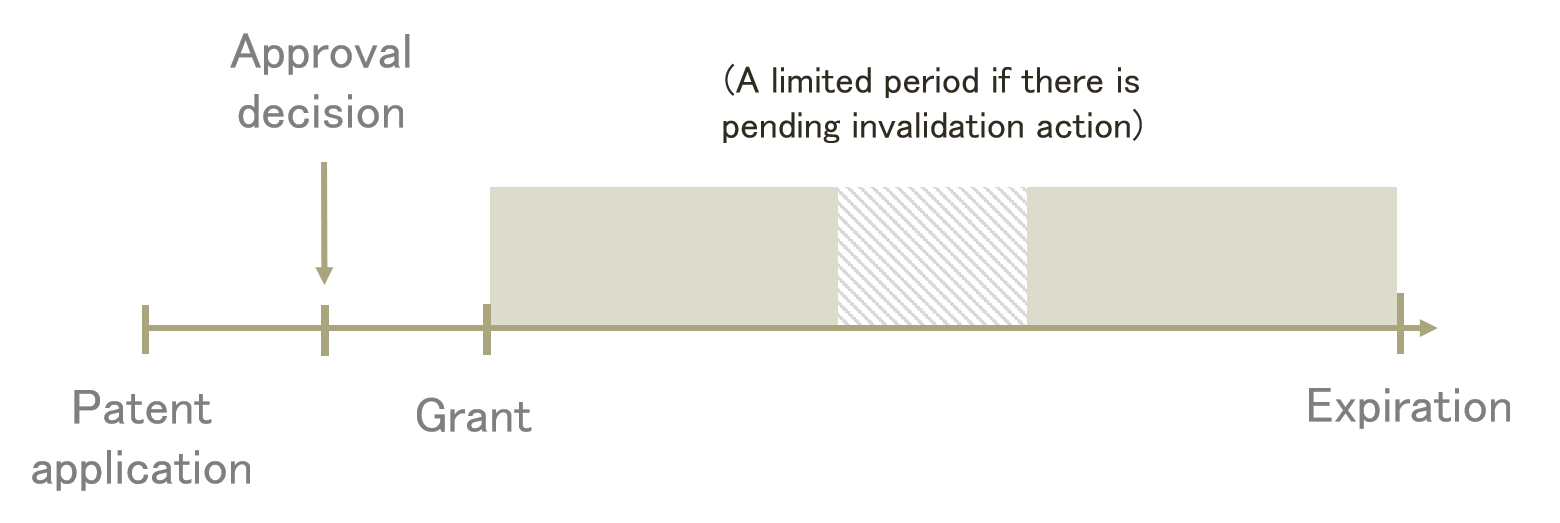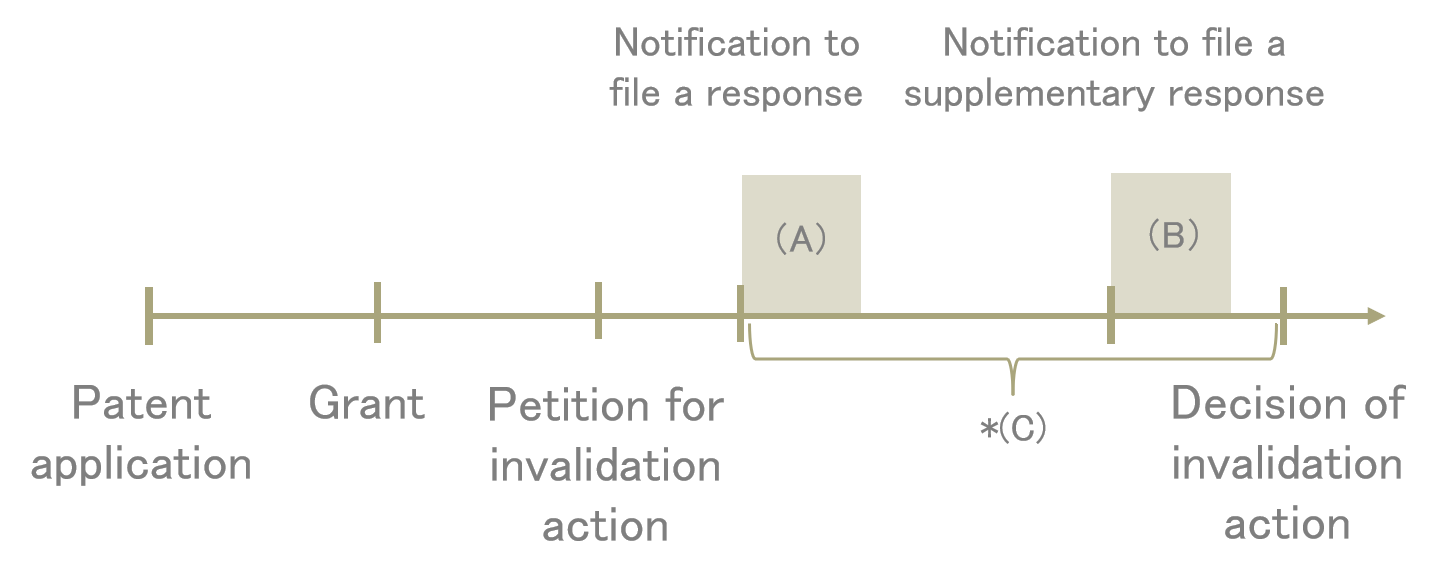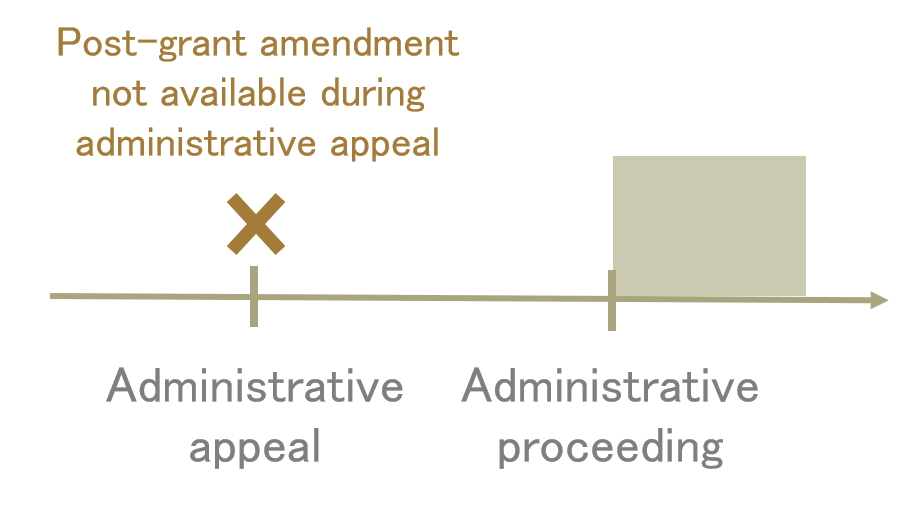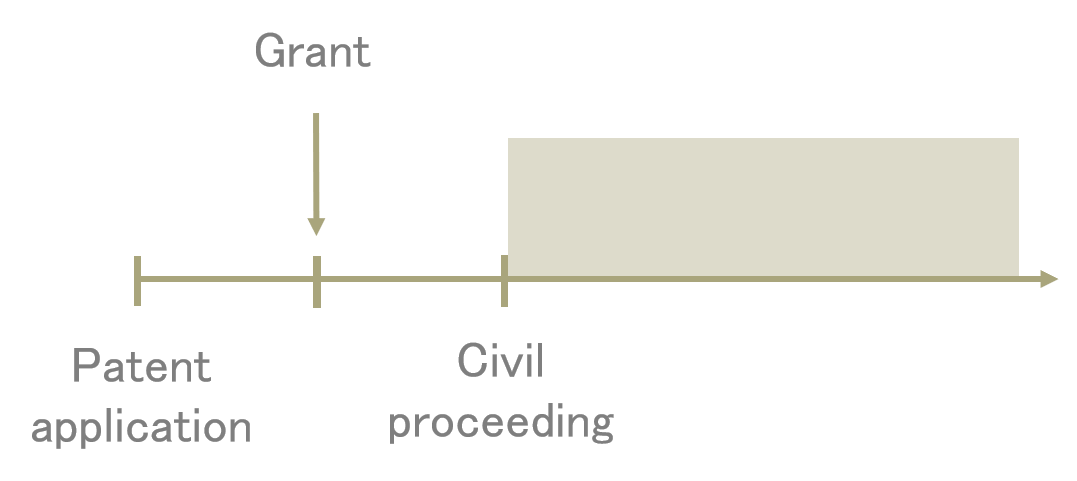Part I – Exploring Differences between Taiwan and China’s Post-Grant Amendment Systems and Suggested Strategies
Date: 7 September 2021
【Volume 57】
Although Chinese is the official language for patent prosecution in both Taiwan and China, the two jurisdictions differ greatly in their regulations regarding post-grant amendments. Both IP Offices have relaxed their determination on the legality of post-grant amendments each in its revised Patent Examination Guidelines (2017)i.
In this two-part deep dive, we compare and analyze how Taiwan and China treat post-grant amendments and offer our insight to how applicants should go about patent prosecution in these jurisdictions. The first part focuses on the regulations, specifically when post-grant amendment is available and its eligible forms.
Time for filing post-grant amendments
Taiwan
Taiwan allows for more flexible times to file post-grant amendments than China, as shown in the following graphs:
(1) Patents with no pending invalidation action and proceeding ii
Once a patent is granted with no pending invalidation action and proceeding, post-grant amendment may be requested at any time.

(2) Patents with pending invalidation action iii
i. During invalidation trial, post-grant amendment may only be requested in the following timeslots:
(A) Specified period for filing a response
(B) Specified period for filing a supplementary response (when the invalidation petitioner provides supplemental arguments)
*(C) Specified period for filing a response after receiving IPO’s grounds for rejection of amendment

ii. During administrative proceeding
If the invalidation petitioner produces new evidence, post-grant amendment may be made to the claims that have not received a revocation decision.

(3) Patents with pending civil infringement proceeding
Post-grant amendment may be requested at any time for patents with pending civil infringement proceeding.

China:
In China, post-grant amendments are only possible during invalidation actionsiv:

Moreover, the eligible forms of post-grant amendments vary across different times during the invalidation action.
Subject, forms, and restrictions regarding Post-grant Amendments
Taiwan:
Although there are different times at which post-grant amendments are available depending on whether there are invalidation actions or civil infringement suits associated, the subject, eligible forms and restrictions regarding post-grant amendments are consistentv:
| Subject | Description, claims, or drawings |
|---|---|
| Eligible forms | Post-grant amendments to the description, claims, or drawings are limited to:
|
| Restrictions | Except for correcting mistranslations, post-grant amendments shall not extend beyond the scope at the time of filing.
An post-grant amendment shall not substantially enlarge or alter the scope of the claim(s) as published. |
The 2017 edition of the “Patent Examination Guidelines for Post-Grant Amendments” provides that if the additional technical features in the claim(s) could not fulfil the purpose of invention before amending the claim, then it is considered as substantially altering the scope of the claim(s).
Therefore, on the assumption that “including additional technical features in the claim(s) for post-grant amendments” can achieve the purpose of invention before amending the claim(s), this shall not constitute as substantially altering the scope of the claim(s) and the amendments will be approved.
China:
As opposed to Taiwan, China only allows post-grant amendments be made to “claims” and not other parts of the specification. As for the eligible forms, China has been taking a more lenient approach since 2017, where aside from deletion of claims and technical features, it also allows a further limitation of claims and correction of obvious errorsvi.
| Subject | Claims only | |
|---|---|---|
| Eligible forms |
|
(Before the 2017 edition of the “Examination Guidelines”)
|
| Restrictions |
|
|
As stated above, China only allows post-grant amendments be filed during invalidation actions. Further, the eligible forms of post-grant amendments also differ at points of time:
| Eligible forms |
During invalidation actions:
|
|
|---|---|---|
|
(Apart from the three occasions above) Before the Patent Reexamination Board renders a decision |
|
“Further limitation of claims” shall meet the following two requirements:
- Amending the claim by adding one or more technical features recited in the other claims;
- The amended claim shall result in a narrowed scope of protection.
These two requirements must be met to establish a “further limitation”. Therefore, it is not allowed to amend the claim by adding content from the description.
Wisdom Comments
As summarized, Taiwan and China differ in multiple aspects in terms of amendment after grant. Perhaps the most crucial point, one that applicants and patentees should keep in mind, is that China only allows claims to be amended.
In the next part, we compare and discuss three cases that best manifest the above, in which Taiwan and China rules differently in terms of the eligible forms of post-grant amendments, and offer our suggestions to those hoping to secure patents in both jurisdictions.
[i]For more information on the regulations in Taiwan, please refer to Wisdom News Volume 2.
[ii]Article 67, Taiwan Patent Act
[iii]Article 74, Taiwan Patent Act
[iv]Article 69, Paragraph 1, Rules for the Implementation of the Patent Law of the People's Republic of China
[v]Article 67, Taiwan Patent Act
[vi]4.6, Chapter 3, Part 4, China Patent Examination Guidelines






